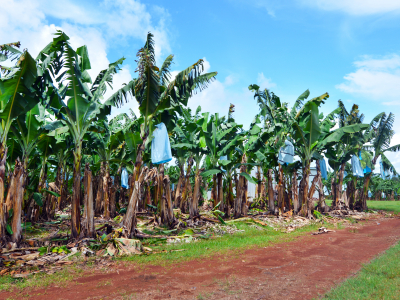Biosecurity is about managing risks to the economy, the environment and the community from pests and diseases entering, establishing, or spreading in the Australian landscape. To manage the risks of biosecurity threats, all levels of government invest in biosecurity activities. These activities include preventing, detecting, eradicating, containing, and managing a variety of pests and diseases on an ongoing basis.
Managing biosecurity is critical to maintaining the productivity of Queensland's agricultural sector. Agriculture is a significant contributor to the state's economy. For 2016–17, the Department of Agriculture and Fisheries forecast the total value of Queensland's agricultural commodities to be $18.55 billion.
This audit examined how well the Department of Agriculture and Fisheries, through Biosecurity Queensland, measures and reports on the efficiency and effectiveness of its detection, response, and management initiatives and activities. We specifically audited the Panama program, wild dog management, and state-funded surveillance activities.
Recommendations
We recommend the Department of Agriculture and Fisheries:
1. continue to develop an appropriate number of specific, measurable, achievable, relevant, and timed key performance indicators for each of Biosecurity Queensland’s key activities or initiatives (Chapter 2). In doing so, it should:
- plan how Biosecurity Queensland will collect and analyse data to monitor these key performance indicators
- collaborate with industry and other stakeholders where appropriate on the collection of data to support performance monitoring
- evaluate the success of key activities or initiatives in delivering the desired outcomes
2. improve quarterly reporting processes by not only reporting on inputs and activities for key biosecurity initiatives, but also on risks and progress towards achieving objectives and outcomes to support strategic management decisions (Chapter 2)
3. ensure that when Biosecurity Queensland participates in pest and disease management strategies which share responsibilities with other entities, it clearly determines:
- its roles and responsibilities compared to the other entities involved
- the key performance indicators that will be used to assess its contribution to the strategy
- which entity is best placed to monitor performance of the strategy and evaluate it at appropriate intervals (Chapter 2)
4. monitors and reports on the input costs over time for each of Biosecurity Queensland’s key outputs, activities, or initiatives to identify further efficiency improvements (Chapter 3)
5. considers options to implement the efficiency improvements that were identified during the planning of the Biosecurity Information Management System program and are now not within scope (Chapter 3).
